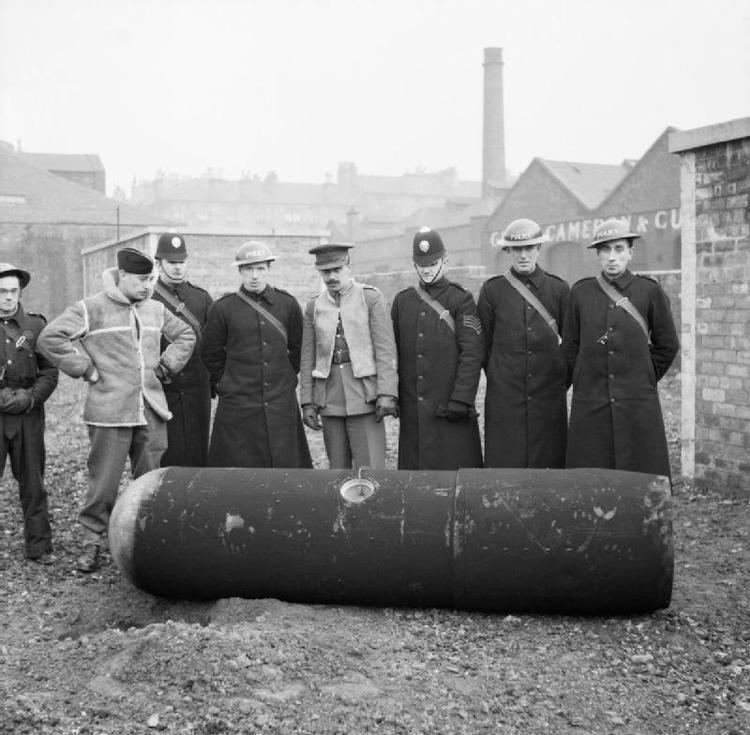 | ||
A parachute mine is a naval mine dropped from an aircraft by parachute. They were mostly used in the Second World War by the Luftwaffe and initially by the Royal Air Force (RAF) Bomber Command. Frequently, they were dropped on land targets.
Contents
Blast effects
These mines were attached to parachutes to act as blast bombs; when detonated at roof level rather than on impact the aerodynamic effects of their blast were maximised. Instead of the shock waves from the explosion being cushioned by surrounding buildings, they could reach a wider area, with the potential to destroy a whole street of houses in a 110 yd (100 m) radius and windows being blown in up to a mile away.
Luftwaffe
During the Second World War, the Luftwaffe used a number of different kinds of parachute mine. The Luftmine A (LMA) and Luftmine B (LMB) weighed 500 kg (1,100 lb) and 1,000 kg (2,200 lb) respectively. The LMA was 5 ft 8 in (1.73 m) in length and the LMB 8 ft 8 in (2.64 m).
After the parachute opened, the mine would descend at around 40 miles per hour (64 km/h). If it came down on land, a clockwork mechanism would detonate the mine 25 seconds after impact. If the mine landed in water it would sink to the bottom. If the depth was greater than 8 feet (2.4 m), water pressure and the dissolving of a water–soluble plug would deactivate the clockwork time-detonator, and activate an anti-shipping detonator. These were initially magnetic detonators but later, acoustic or magnetic/acoustic detonators could be fitted.
The Luftwaffe began dropping these mines in British waters in November 1939, using Heinkel He 115 seaplanes and Heinkel He 111 land–based bombers. They were first used against land targets on 16 September 1940 in the early stages of the Blitz.
The Luftwaffe also used the 1,000 kg (2,200 lb) Bombenmine (BM 1000, Monika, or G Mine). This was fitted with a tail made from Bakelite which broke up on impact. It had a photoelectric cell beneath a cover which detonated the bomb if exposed to light to counteract the work of bomb disposal units.
RAF
The RAF initially used naval mines, but replaced them with purpose-made blockbuster bombs, which were produced in various sizes up to 12,000 pounds (5,400 kg).
